In the context of bacterial infections, it’s crucial that physiological responses could be studied in an built-in method, which means a simultaneous evaluation of each the host and the pathogen responses. To enhance the sensitivity of detection, data-independent acquisition (DIA)-based proteomics was discovered to outperform data-dependent acquisition (DDA) workflows in figuring out and quantifying low-abundant proteins.
Here, by making use of consultant bacterial pathogen/host proteome samples, we report an optimized hybrid library technology workflow for DIA mass spectrometry counting on the use of data-dependent and in silico-predicted spectral libraries. When in comparison with looking out DDA experiment-specific libraries solely, the use of hybrid libraries considerably improved peptide detection to an extent suggesting that infection-relevant host-pathogen situations may very well be profiled in ample depth with out the necessity of a priori bacterial pathogen enrichment when finding out the bacterial proteome.
Insights into Impact of DNA Copy Number Alteration and Methylation on the Proteogenomic Landscape of Human Ovarian Cancer by way of a Multi-omics Integrative Analysis
In this work, we suggest iProFun, an integrative evaluation device to display screen for proteogenomic purposeful traits perturbed by DNA copy quantity alterations (CNAs) and DNA methylations. The objective is to characterize purposeful penalties of DNA copy quantity and methylation alterations in tumors and to facilitate screening for most cancers drivers contributing to tumor initiation and development. Specifically, we take into account three purposeful molecular quantitative traits: mRNA expression ranges, international protein abundances, and phosphoprotein abundances.
We goal to determine these genes whose CNAs and/or DNA methylations have cis-associations with both some or all three varieties of molecular traits. Compared with analyzing every molecular trait individually, the joint modeling of multi-omics knowledge enjoys a number of advantages: iProFun skilled enhanced energy for detecting vital cis-associations shared throughout completely different omics knowledge varieties, and it additionally achieved higher accuracy in inferring cis-associations distinctive to sure sort(s) of molecular trait(s). For instance, distinctive associations of CNAs/methylations to international/phospho protein abundances might indicate posttranslational laws.
We utilized iProFun to ovarian high-grade serous carcinoma tumor knowledge from The Cancer Genome Atlas and Clinical Proteomic Tumor Analysis Consortium and recognized CNAs and methylations of 500 and 121 genes, respectively, affecting the cis-functional molecular quantitative traits of the corresponding genes. We noticed substantial energy acquire by way of the joint evaluation of iProFun. For instance, iProFun recognized 117 genes whose CNAs have been related to phosphoprotein abundances by leveraging mRNA expression ranges and international protein abundances. By comparability, analyses primarily based on phosphoprotein knowledge alone recognized none.
A community evaluation of these 117 genes revealed the recognized oncogene AKT1 as a key hub node interacting with many of the remainder. In addition, iProFun recognized one gene, BIN2, whose DNA methylation has cis-associations with its mRNA expression, international protein, and phosphoprotein abundances. These and different genes recognized by iProFun might function potential drug targets for ovarian most cancers. The want for diagnostic biomarkers of cognitive decline is especially vital amongst getting older adults with Down syndrome (DS). Growing empirical assist has recognized the utility of plasma derived biomarkers amongst neurotypical adults with gentle cognitive impairment (MCI) and Alzheimer’s illness (AD); nevertheless, the appliance of such biomarkers has been restricted among the many DS inhabitants.

Proteome-wide Tyrosine Phosphorylation Analysis Reveals Dysregulated Signaling Pathways in Ovarian Tumors
The current accomplishment of complete proteogenomic evaluation of high-grade serous ovarian carcinoma (HGSOC) tissues reveals most cancers related molecular alterations weren’t restricted to variations amongst DNA, and mRNA/protein expression, however are a end result of advanced reprogramming of signaling pathways/networks mediated by the protein and post-translational modification (PTM) interactomes. A scientific, multiplexed strategy interrogating enzyme-substrate relationships within the context of PTMs is key in understanding the dynamics of these pathways, regulation of mobile processes, and their roles in illness processes.
Here, as half of Clinical Proteomic Tumor Analysis Consortium (CPTAC) mission, we established a multiplexed PTM assay (tyrosine phosphorylation, and lysine acetylation, ubiquitylation and SUMOylation) methodology to determine protein probes’ PTMs on the human proteome array. Further, we centered on the tyrosine phosphorylation and recognized 19 kinases are doubtlessly chargeable for the dysregulated signaling pathways noticed in HGSOC. Additionally, elevated kinase exercise was noticed when 14 ovarian most cancers cell strains or tumor tissues have been subjected to check the autophosphorylation standing of PTK2 (pY397) and PTK2B (pY402) as a proxy for kinase exercise.
Taken collectively, this report demonstrates that PTM signatures primarily based on lysate reactions on human proteome array is a strong, unbiased strategy to determine dysregulated PTM pathways in tumors. During the final century, most cancers biology has been arguably one of essentially the most investigated analysis fields. To acquire deeper perception into most cancers mechanisms, scientists have been making an attempt to combine multi omics knowledge in most cancers analysis. Cancer genomics, transcriptomics, metabolomics, proteomics, and metagenomics are the principle multi omics methods used at present within the prognosis, prognosis, remedy, and biomarker discovery in most cancers.
 JAG-1, scrambled |
|
TP1686-1mg |
TargetMol Chemicals |
1mg |
Ask for price |
|
|
|
Description: JAG-1, scrambled |
 JAG-1, scrambled |
|
TP1686-50mg |
TargetMol Chemicals |
50mg |
Ask for price |
|
|
|
Description: JAG-1, scrambled |
 JAG-1, scrambled |
|
TP1686-5mg |
TargetMol Chemicals |
5mg |
Ask for price |
|
|
|
Description: JAG-1, scrambled |
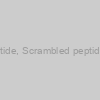 Human NEP1-40 of Nogo-66 peptide, Scrambled peptide control for NEP140, >95% pure |
|
NEP140-115 |
Alpha Diagnostics |
100 ug |
EUR 343.2 |
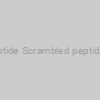 Human NEP1-40 of Nogo-66 peptide Scrambled peptide control for NEP140 >95% pure |
|
NEP140-115-1000 |
Alpha Diagnostics |
1000 ug |
EUR 927.6 |
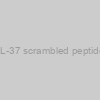 LL-37 scrambled peptide |
|
TP1825-10mg |
TargetMol Chemicals |
10mg |
Ask for price |
|
|
|
Description: LL-37 scrambled peptide |
 LL-37 scrambled peptide |
|
TP1825-1g |
TargetMol Chemicals |
1g |
Ask for price |
|
|
|
Description: LL-37 scrambled peptide |
 LL-37 scrambled peptide |
|
TP1825-1mg |
TargetMol Chemicals |
1mg |
Ask for price |
|
|
|
Description: LL-37 scrambled peptide |
 LL-37 scrambled peptide |
|
TP1825-50mg |
TargetMol Chemicals |
50mg |
Ask for price |
|
|
|
Description: LL-37 scrambled peptide |
 LL-37 scrambled peptide |
|
TP1825-5mg |
TargetMol Chemicals |
5mg |
Ask for price |
|
|
|
Description: LL-37 scrambled peptide |
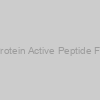 JAG-1 Protein Active Peptide Fragment |
|
080-11 |
PHOENIX PEPTIDE |
100 μg |
EUR 129.6 |
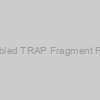 Scrambled TRAP Fragment Peptide |
|
20-abx265858 |
Abbexa |
-
Ask for price
-
Ask for price
-
Ask for price
|
|
|
|
 Scrambled TRAP Fragment Peptide |
|
abx265858-200tests |
Abbexa |
200 tests |
EUR 225 |
 Scrambled TRAP Fragment Peptide |
|
abx265858-500tests |
Abbexa |
500 tests |
EUR 312.5 |
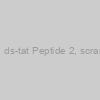 sgp91 ds-tat Peptide 2, scrambled |
|
TP1585-10mg |
TargetMol Chemicals |
10mg |
Ask for price |
|
|
|
Description: sgp91 ds-tat Peptide 2, scrambled |
 sgp91 ds-tat Peptide 2, scrambled |
|
TP1585-1g |
TargetMol Chemicals |
1g |
Ask for price |
|
|
|
Description: sgp91 ds-tat Peptide 2, scrambled |
 sgp91 ds-tat Peptide 2, scrambled |
|
TP1585-1mg |
TargetMol Chemicals |
1mg |
Ask for price |
|
|
|
Description: sgp91 ds-tat Peptide 2, scrambled |
 sgp91 ds-tat Peptide 2, scrambled |
|
TP1585-50mg |
TargetMol Chemicals |
50mg |
Ask for price |
|
|
|
Description: sgp91 ds-tat Peptide 2, scrambled |
 sgp91 ds-tat Peptide 2, scrambled |
|
TP1585-5mg |
TargetMol Chemicals |
5mg |
Ask for price |
|
|
|
Description: sgp91 ds-tat Peptide 2, scrambled |
 3-D Life Scrambled RGD Peptide |
|
09-P-003 |
Cellendes |
1 µmol |
EUR 107 |
 3-D Life Scrambled RGD Peptide |
|
P11-3 |
Cellendes |
3x 1 µmol |
EUR 289 |
) JAG-1, scrambled TFA(402941-23-5 free base) |
|
TP1686L-10mg |
TargetMol Chemicals |
10mg |
Ask for price |
|
|
|
Description: JAG-1, scrambled TFA(402941-23-5 free base) |
) JAG-1, scrambled TFA(402941-23-5 free base) |
|
TP1686L-1g |
TargetMol Chemicals |
1g |
Ask for price |
|
|
|
Description: JAG-1, scrambled TFA(402941-23-5 free base) |
) JAG-1, scrambled TFA(402941-23-5 free base) |
|
TP1686L-1mg |
TargetMol Chemicals |
1mg |
Ask for price |
|
|
|
Description: JAG-1, scrambled TFA(402941-23-5 free base) |
) JAG-1, scrambled TFA(402941-23-5 free base) |
|
TP1686L-50mg |
TargetMol Chemicals |
50mg |
Ask for price |
|
|
|
Description: JAG-1, scrambled TFA(402941-23-5 free base) |
) JAG-1, scrambled TFA(402941-23-5 free base) |
|
TP1686L-5mg |
TargetMol Chemicals |
5mg |
Ask for price |
|
|
|
Description: JAG-1, scrambled TFA(402941-23-5 free base) |
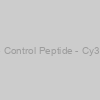 PGMtide Control Peptide - Cy3 Labeled |
|
FC3-040-70 |
PHOENIX PEPTIDE |
1 nmol |
EUR 925.56 |
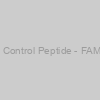 PGMtide Control Peptide - FAM Labeled |
|
FG-040-70A |
PHOENIX PEPTIDE |
5 nmol |
EUR 537.84 |
 Scrambled-peptide Knockdown Control Cell Line Expressing Dendra2 |
|
T6521 |
ABM |
1x10^6 cells / 1.0 ml |
Ask for price |
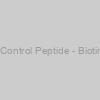 PGMtide Control Peptide - Biotin Labeled |
|
B-040-70 |
PHOENIX PEPTIDE |
20 μg |
EUR 537.84 |
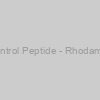 PGMtide Control Peptide - Rhodamine Labeled |
|
FR-040-70 |
PHOENIX PEPTIDE |
5 nmol |
EUR 604.8 |
 -Polyclone) Scrambled shRNA Control THP-1 Cell Line (With GFP) -Polyclone |
|
T9790 |
ABM |
1x10^6 cells / 1.0 ml |
Ask for price |
 L201 pLVPTH2- tTR- KRAB- Cerulean- scrambled- shRNA- Control |
|
PVT11122 |
Lifescience Market |
2 ug |
EUR 361.2 |
) Human, mouse, rat connexin 43 and 37 scrambled peptide (GAP27 domain) |
|
Cx2704-PS-1 |
Alpha Diagnostics |
1 mg |
EUR 315.6 |
) Human, mouse, rat connexin 43 and 37 scrambled peptide (GAP27 domain) |
|
Cx2704-PS-5 |
Alpha Diagnostics |
5 mg |
EUR 927.6 |
) Human, mouse, rat connexin 37/40 hemi-channel Scrambled peptide (GAP26 domain) |
|
Cx2602-PS-1 |
Alpha Diagnostics |
1 mg |
EUR 343.2 |
) Human, mouse, rat connexin 37/40 hemi-channel Scrambled peptide (GAP26 domain) |
|
Cx2602-PS-5 |
Alpha Diagnostics |
5 mg |
EUR 927.6 |
) ZIP (SCRAMBLED) |
|
A8830-1 |
ApexBio |
1 mg |
EUR 74 |
|
|
|
Description: PKMζ inhibitor |
 Mouse Lipin-1 Control/blocking peptide control/blocking peptide #1 |
|
LPN11-P |
Alpha Diagnostics |
100 ug |
EUR 196.8 |
 Scrambled 10Panx |
|
A2701-1 |
ApexBio |
1 mg |
EUR 40 |
|
|
|
Description: Panx-1 mimetic inhibitory peptide, blocks pannexin-1 gap junctions |
 Scrambled 10Panx |
|
A2701-10 |
ApexBio |
10 mg |
EUR 144 |
|
|
|
Description: Panx-1 mimetic inhibitory peptide, blocks pannexin-1 gap junctions |
 Scrambled 10Panx |
|
A2701-25 |
ApexBio |
25 mg |
EUR 320 |
|
|
|
Description: Panx-1 mimetic inhibitory peptide, blocks pannexin-1 gap junctions |
 Scrambled 10Panx |
|
A2701-5 |
ApexBio |
5 mg |
EUR 80 |
|
|
|
Description: Panx-1 mimetic inhibitory peptide, blocks pannexin-1 gap junctions |
 Mouse Lipin-2 Control/blocking peptide control/blocking peptide #1 |
|
LPN21-P |
Alpha Diagnostics |
100 ug |
EUR 196.8 |
 Mouse Lipin-3 Control/blocking peptide control/blocking peptide #1 |
|
LPN31-P |
Alpha Diagnostics |
100 ug |
EUR 196.8 |
) LL-37 (scrambled) |
|
4099707.05 |
Bachem |
0.5 mg |
EUR 195.51 |
|
|
) LL-37 (scrambled) |
|
4099707.1 |
Bachem |
1 mg |
EUR 317.94 |
|
|
) LL-37 (scrambled) |
|
H-7886.0500 |
Bachem |
0.5mg |
EUR 339.6 |
|
Description: Sum Formula: C205H340N60O53; CAS# [1354065-56-7] net |
) LL-37 (scrambled) |
|
H-7886.1000 |
Bachem |
1.0mg |
EUR 529.2 |
|
Description: Sum Formula: C205H340N60O53; CAS# [1354065-56-7] net |
 Acetate) ZIP (SCRAMBLED) Acetate |
|
T22175L-10mg |
TargetMol Chemicals |
10mg |
Ask for price |
|
|
|
Description: ZIP (SCRAMBLED) Acetate |
 Acetate) ZIP (SCRAMBLED) Acetate |
|
T22175L-1g |
TargetMol Chemicals |
1g |
Ask for price |
|
|
|
Description: ZIP (SCRAMBLED) Acetate |
 Acetate) ZIP (SCRAMBLED) Acetate |
|
T22175L-1mg |
TargetMol Chemicals |
1mg |
Ask for price |
|
|
|
Description: ZIP (SCRAMBLED) Acetate |
 Acetate) ZIP (SCRAMBLED) Acetate |
|
T22175L-50mg |
TargetMol Chemicals |
50mg |
Ask for price |
|
|
|
Description: ZIP (SCRAMBLED) Acetate |
 Acetate) ZIP (SCRAMBLED) Acetate |
|
T22175L-5mg |
TargetMol Chemicals |
5mg |
Ask for price |
|
|
|
Description: ZIP (SCRAMBLED) Acetate |
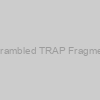 Scrambled TRAP Fragment |
|
T38743-10mg |
TargetMol Chemicals |
10mg |
Ask for price |
|
|
|
Description: Scrambled TRAP Fragment |
 Scrambled TRAP Fragment |
|
T38743-1g |
TargetMol Chemicals |
1g |
Ask for price |
|
|
|
Description: Scrambled TRAP Fragment |
 Scrambled TRAP Fragment |
|
T38743-1mg |
TargetMol Chemicals |
1mg |
Ask for price |
|
|
|
Description: Scrambled TRAP Fragment |
 Scrambled TRAP Fragment |
|
T38743-50mg |
TargetMol Chemicals |
50mg |
Ask for price |
|
|
|
Description: Scrambled TRAP Fragment |
 Scrambled TRAP Fragment |
|
T38743-5mg |
TargetMol Chemicals |
5mg |
Ask for price |
|
|
|
Description: Scrambled TRAP Fragment |
) Neuropeptide Y (scrambled) |
|
B7530-1 |
ApexBio |
1 mg |
EUR 486 |
|
Description: Scrambled Neuropeptide Y (scNPY) was similarly synthesized and contains the same amino acids as NPY, but scNPY is in a random sequence, it was used as a control in the research in NPY [1]. The sequence of scNPY is SKPQRDANREPTRYAIYDYSNPDIELHYLRPAYALG-NH2 [2]. |
) Neuropeptide Y (scrambled) |
|
TP2194-10mg |
TargetMol Chemicals |
10mg |
Ask for price |
|
|
|
Description: Neuropeptide Y (scrambled) |
) Neuropeptide Y (scrambled) |
|
TP2194-1g |
TargetMol Chemicals |
1g |
Ask for price |
|
|
|
Description: Neuropeptide Y (scrambled) |
) Neuropeptide Y (scrambled) |
|
TP2194-1mg |
TargetMol Chemicals |
1mg |
Ask for price |
|
|
|
Description: Neuropeptide Y (scrambled) |
) Neuropeptide Y (scrambled) |
|
TP2194-50mg |
TargetMol Chemicals |
50mg |
Ask for price |
|
|
|
Description: Neuropeptide Y (scrambled) |
) Neuropeptide Y (scrambled) |
|
TP2194-5mg |
TargetMol Chemicals |
5mg |
Ask for price |
|
|
|
Description: Neuropeptide Y (scrambled) |
 control/blocking peptide # 1) Mouse Peptide YY (PYY) control/blocking peptide # 1 |
|
PYY11-P |
Alpha Diagnostics |
100 ug |
EUR 196.8 |
 (Frog)) Growth Hormone-Releasing Peptide-Related Peptide-1 (fGRP-RP-1) (Frog) |
|
048-80 |
PHOENIX PEPTIDE |
500 μg |
EUR 177.12 |
 (scrambled)) Amyloid β-Protein (1-42) (scrambled) |
|
4064853.05 |
Bachem |
0.5 mg |
EUR 317.94 |
|
|
 (scrambled)) Amyloid β-Protein (1-42) (scrambled) |
|
4064853.1 |
Bachem |
1 mg |
EUR 432.6 |
|
|
 (scrambled)) Amyloid b-Protein (1-42) (scrambled) |
|
H-7406.0500 |
Bachem |
0.5mg |
EUR 529.2 |
|
Description: Sum Formula: C203H311N55O60S; CAS# [1678415-52-5] net |
 (scrambled)) Amyloid b-Protein (1-42) (scrambled) |
|
H-7406.1000 |
Bachem |
1.0mg |
EUR 706.8 |
|
Description: Sum Formula: C203H311N55O60S; CAS# [1678415-52-5] net |
 (scrambled)) Amyloid b-Protein (1-40) (scrambled) |
|
H-7408.0500 |
Bachem |
0.5mg |
EUR 402 |
|
Description: Sum Formula: C194H295N53O58S; CAS# [1678415-68-3] net |
 (scrambled)) Amyloid b-Protein (1-40) (scrambled) |
|
H-7408.1000 |
Bachem |
1.0mg |
EUR 727.2 |
|
Description: Sum Formula: C194H295N53O58S; CAS# [1678415-68-3] net |
 Angiotensin II - constrained peptide 1 |
|
004-09 |
PHOENIX PEPTIDE |
500 μg |
EUR 165.24 |
 / Peptide 401) Mast Cell-Degranulating Peptide (MCD Peptide) / Peptide 401 |
|
004-04 |
PHOENIX PEPTIDE |
100 μg |
EUR 140.4 |
) Control Peptide PPAR (neutralizing peptide) |
|
GWB-8C0889 |
GenWay Biotech |
0.05 mg |
Ask for price |
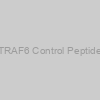 TRAF6 Control Peptide |
|
4095549.0001 |
Bachem |
1 mg |
EUR 368.55 |
|
|
 TRAF6 Control Peptide |
|
H-7606.0001 |
Bachem |
1.0mg |
EUR 607.2 |
|
Description: Sum Formula: C139H232N34O42; CAS# [852690-80-3] net |
 (1-13) / GnRH Precursor Peptide (14-26) (Human)) GnRH Associated Peptide (GAP) (1-13) / GnRH Precursor Peptide (14-26) (Human) |
|
029-03 |
PHOENIX PEPTIDE |
500 μg |
EUR 114.48 |
 (1-24) / GnRH Precursor Peptide (14-37) (Human)) GnRH Associated Peptide (GAP) (1-24) / GnRH Precursor Peptide (14-37) (Human) |
|
029-04 |
PHOENIX PEPTIDE |
100 μg |
EUR 114.48 |
 (1-53) / GnRH Precursor Peptide (14-66) (Human)) GnRH Associated Peptide (GAP) (1-53) / GnRH Precursor Peptide (14-66) (Human) |
|
029-05 |
PHOENIX PEPTIDE |
20 μg |
EUR 267.84 |
) Human MDM2 siRNA (Scrambled) |
|
abx941274-150g |
Abbexa |
150 µg |
EUR 450 |
) Human MDM2 siRNA (Scrambled) |
|
abx941274-300g |
Abbexa |
300 µg |
EUR 612.5 |
 (1-13) / Gn-RH Precursor Peptide (14-26) (Rat)) GnRH Associated Peptide (GAP) (1-13) / Gn-RH Precursor Peptide (14-26) (Rat) |
|
029-08 |
PHOENIX PEPTIDE |
200 μg |
EUR 64.8 |
 amide (human) (scrambled)) PAR-2 (1-6) amide (human) (scrambled) |
|
H-6428.0025 |
Bachem |
25.0mg |
EUR 385.2 |
|
Description: Sum Formula: C28H54N8O7; CAS# [1348395-60-7] net |
 amide (human) (scrambled)) PAR-2 (1-6) amide (human) (scrambled) |
|
H-6428.0100 |
Bachem |
100.0mg |
EUR 1082.4 |
|
Description: Sum Formula: C28H54N8O7; CAS# [1348395-60-7] net |
 amide / prepro-Bombinin-Like Peptide (107-133) amide) Bombinin-Like Peptide 1 amide / prepro-Bombinin-Like Peptide (44-70) amide / prepro-Bombinin-Like Peptide (107-133) amide |
|
007-60 |
PHOENIX PEPTIDE |
100 μg |
EUR 214.92 |
) Human EGFRviii siRNA (Scrambled) |
|
abx941279-150g |
Abbexa |
150 µg |
EUR 450 |
) Human EGFRviii siRNA (Scrambled) |
|
abx941279-300g |
Abbexa |
300 µg |
EUR 612.5 |
 Compstatin control peptide |
|
B5478-1 |
ApexBio |
1 mg |
EUR 270 |
|
|
|
Description: control peptide for Compstatin, a complement inhibitor |
 Compstatin control peptide |
|
TP2180-10mg |
TargetMol Chemicals |
10mg |
Ask for price |
|
|
|
Description: Compstatin control peptide |
 Compstatin control peptide |
|
TP2180-1g |
TargetMol Chemicals |
1g |
Ask for price |
|
|
|
Description: Compstatin control peptide |
 Compstatin control peptide |
|
TP2180-1mg |
TargetMol Chemicals |
1mg |
Ask for price |
|
|
|
Description: Compstatin control peptide |
 Compstatin control peptide |
|
TP2180-50mg |
TargetMol Chemicals |
50mg |
Ask for price |
|
|
|
Description: Compstatin control peptide |
 Compstatin control peptide |
|
TP2180-5mg |
TargetMol Chemicals |
5mg |
Ask for price |
|
|
|
Description: Compstatin control peptide |
) 5-FAM-LL-37 (scrambled) |
|
4099708.05 |
Bachem |
0.5 mg |
EUR 335.9 |
|
|
) 5-FAM-LL-37 (scrambled) |
|
4099708.1 |
Bachem |
1 mg |
EUR 577.5 |
|
|
) 5-FAM-LL-37 (scrambled) |
|
H-7888.0500 |
Bachem |
0.5mg |
EUR 559.2 |
|
Description: Sum Formula: C226H350N60O59; CAS# [2022972-73-0] net |
) 5-FAM-LL-37 (scrambled) |
|
H-7888.1000 |
Bachem |
1.0mg |
EUR 931.2 |
|
Description: Sum Formula: C226H350N60O59; CAS# [2022972-73-0] net |
 (1-26) (Aplysia brasiliana)) Peptide I / pro-Histine-Rich Basic Peptide (HRBP) (1-26) (Aplysia brasiliana) |
|
047-39 |
PHOENIX PEPTIDE |
200 μg |
EUR 444.96 |
 (1-26) (Aplysia californica)) Peptide I / pro-Histine-Rich Basic Peptide (HRBP) (1-26) (Aplysia californica) |
|
047-42 |
PHOENIX PEPTIDE |
200 μg |
EUR 444.96 |
) Erythropoietin-Mimetic Peptide 1 (EMP-1) |
|
070-27 |
PHOENIX PEPTIDE |
100 μg |
EUR 160.92 |
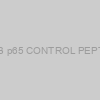 NFkB p65 CONTROL PEPTIDE |
|
GWB-AEDCA2 |
GenWay Biotech |
0.05 mg |
Ask for price |
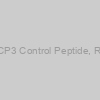 UCP3 Control Peptide, Rat |
|
GWB-687648 |
GenWay Biotech |
0.1 mg |
Ask for price |
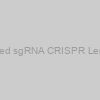 Scrambled sgRNA CRISPR Lentivector |
|
K018 |
ABM |
1.0 ug |
EUR 184.8 |
 Control/blocking peptide #1) Rat Exchange inhibitory peptide (XIP) Control/blocking peptide #1 |
|
XIP11-P |
Alpha Diagnostics |
100 ug |
EUR 196.8 |
 Human APOBEC 1 Control/blocking peptide # 1 |
|
APOBEC11-P |
Alpha Diagnostics |
100 ug |
EUR 196.8 |
 Human Merlin 1 Control/blocking peptide #1 |
|
MERL11-P |
Alpha Diagnostics |
100 ug |
EUR 196.8 |
 (Human)) RFamide-Related Peptide 1 (RFRP-1) (Human) |
|
048-42 |
PHOENIX PEPTIDE |
500 μg |
EUR 177.12 |
 Control/blocking peptide #1) Human Glucagon like peptide 1 (GLP-1/GLP1) Control/blocking peptide #1 |
|
GLP15-P |
Alpha Diagnostics |
100 ug |
EUR 196.8 |
 Control/blocking peptide #1) Human Gastric inhibitory peptide (GIP) Control/blocking peptide #1 |
|
GIP71-P |
Alpha Diagnostics |
100 ug |
EUR 196.8 |
 (1-36)-Gly (Human)) Peptide YY (PYY) (1-36)-Gly (Human) |
|
059-07 |
PHOENIX PEPTIDE |
100 μg |
EUR 295.92 |
 Human NHERF1 Control/blocking peptide #1 |
|
NHERF11-P |
Alpha Diagnostics |
100 ug |
EUR 196.8 |
 Human NHERF2 Control/blocking peptide #1 |
|
NHERF21-P |
Alpha Diagnostics |
100 ug |
EUR 196.8 |
In this evaluate, we describe the use of completely different multi omics methods in most cancers analysis within the African continent and focus on the principle challenges dealing with the implementation of these approaches in African international locations comparable to the shortage of coaching packages in bioinformatics generally and omics methods particularly and counsel paths to handle deficiencies. As a method ahead, we advocate for the institution of an “African Cancer Genomics Consortium” to advertise intracontinental collaborative initiatives and improve engagement in analysis actions that tackle indigenous facets for most cancers precision medication.

